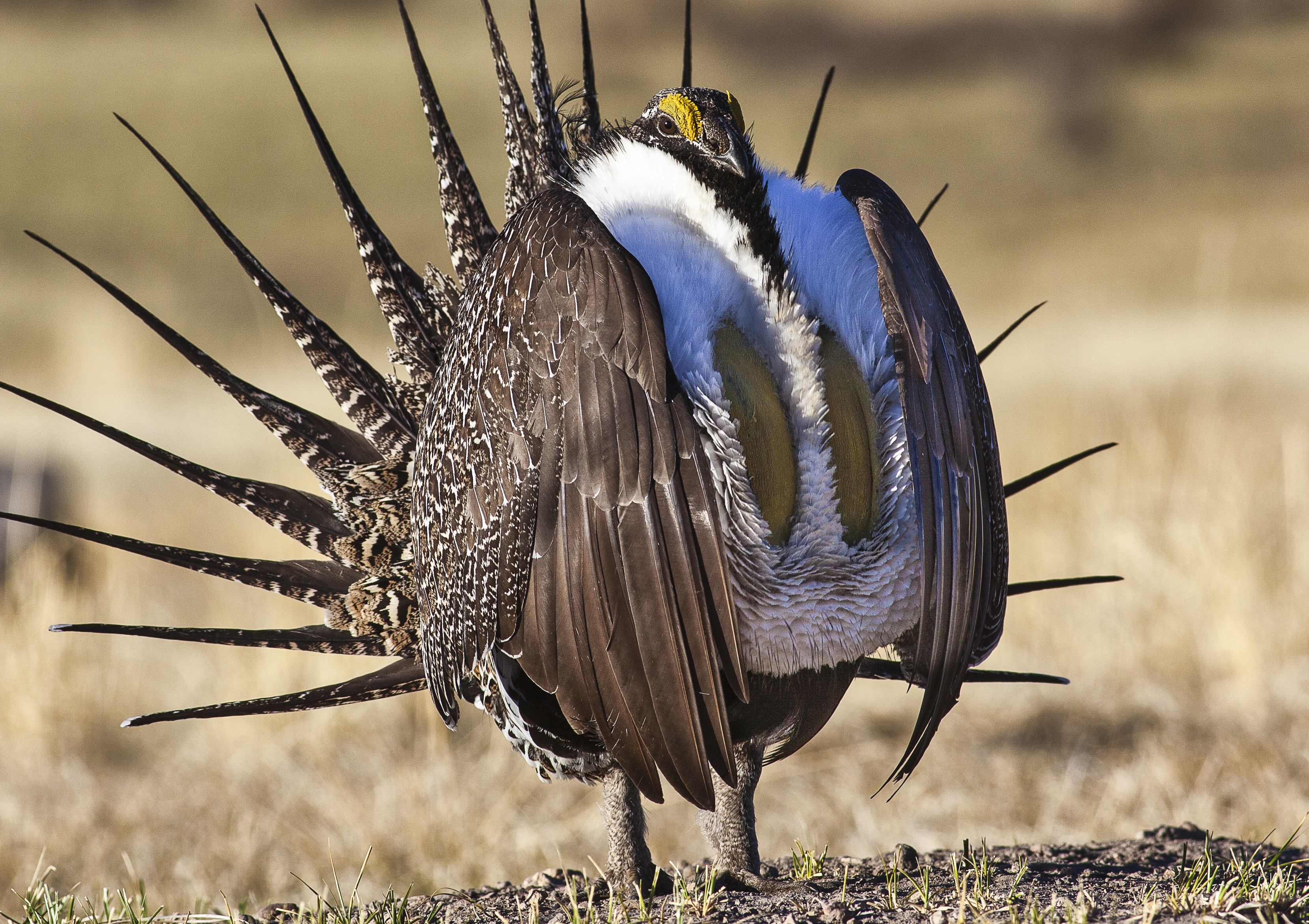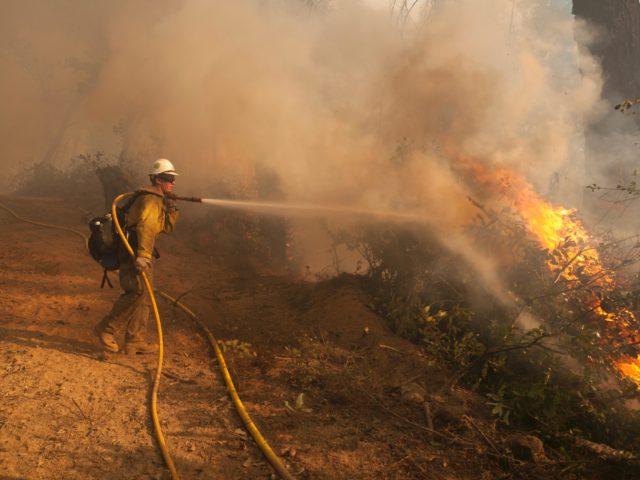Find out what we mean when we say that this policy fight gives us “sage-à vu”
We’ve said it before, but when it comes to conservation policy, sometimes the most meaningful victories are celebrated when something doesn’t happen.
America’s sportsmen and women enjoyed that kind of win this week, as we defeated an attempt to nullify collaborative, landscape-scale conservation efforts for sagebrush species across the West. Without the strong, united voice of our community, we might have seen a crowning achievement of habitat conservation severely diminished under dubious pretenses.
The story should sound familiar—the same bad idea has been put down in multiple sessions of Congress—but that doesn’t make the intention any less threatening: In the 2019 National Defense Authorization Act, which sets annual policy priorities and funding levels for America’s military forces, some lawmakers included a legislative rider preventing the U.S. Fish and Wildlife Service from listing the greater sage grouse and lesser prairie chicken as endangered species for at least 10 years.
The House and Senate passed separate versions of the NDAA earlier in the summer, setting up a conference committee to iron out the differences between the two bills—including the sage grouse language.
Remind Us: Who Said What?
Perennial proponents of the rider cite military readiness as a deciding factor and point to sagebrush habitat on Department of Defense lands. Conservationists argue that this is a smokescreen for legislating wildlife management in a must-pass bill and ultimately undermines the epic collaborative effort to conserve sagebrush habitat across 11 Western states.
The U.S. Fish and Wildlife Service ultimately decided not to list the sage grouse under the Endangered Species Act in 2015, largely based on cooperative efforts to amend 98 land-management plans across the sagebrush steppe. These plans reflect the importance of managing lands to conserve quality habitat for all sagebrush species, rather than setting arbitrary population targets just for these birds.

Preventing any consideration of a future listing in the next 10 years would do little to hold stakeholders accountable for conservation promises.
So, Why Attack Conservation Already In Motion?
Each of the amended plans placed limitations on certain activities, like energy development, grazing, and outdoor recreation, in some areas. But listing the sage grouse as endangered or threatened would have imposed far more restrictions with greater impact on rural economies.
Rather than taking steps to fully implement these plans and prevent a future listing, Congressman Rob Bishop (R-Utah) and others have simply tried to take listing off the table and undermine scientific and collaborative efforts through poor legislating of wildlife management.
Then the Pentagon Weighed In…
Supporters of the provision, led once again by Rep. Bishop, claimed that adhering to the revised land-management plans would harm military readiness. The Pentagon, meanwhile, couldn’t seem to pick a side.
Last Wednesday, news circulated that the Pentagon opposed the anti-sage-grouse provision in the NDAA because it was “not necessary to protect military testing and training.” The next day, however, the Pentagon reversed course, and said it did in fact support the provision. Flip-flopping is certainly common in Washington, but a complete 180 overnight raised some eyebrows.
Winning Without a Major Champion
In previous years, the conservation community relied on the steadfast leadership of Senator John McCain (R-Ariz.), Chairman of the Senate Armed Services Committee, who insisted on limiting the NDAA to topics “germane” to the military. This left Rep. Bishop’s anti-sage-grouse language on the cutting room floor after three previous attempts. Unfortunately, Sen. McCain’s health concerns prevented him from managing this year’s NDAA, raising doubts as to who would champion efforts to keep the provision out.
Thankfully, after months of public outcry from sportsmen and women and much behind-the-scenes debate, the conference committee released its final report—and it does not contain the anti-sage-grouse rider.
Conservation and wildlife advocates can celebrate today, but the fight is hardly over.
The Forecast for Funny Business
Within the next week, Congress will likely pass the NDAA without any more grouse-y shenanigans, but there are other legislative opportunities for such mischief. The BLM and U.S. Forest Service are currently revising the sage-grouse conservation plans agreed upon in 2015, and many scientists say that changes to the plans could undermine protections for the bird. The final outcome must focus on conservation, not hitting a target number of birds, otherwise we’re in for a serious dose of what we’re calling “sage-à vu”—revisiting an endangered or threatened species listing for sage grouse.

But more is at stake than just sage grouse in these comprehensive conservation plans. The sagebrush ecosystem is home to more than 350 different species of plants and animals, including such iconic species as mule deer, pronghorns, and elk—all of which are important to American sportsmen and women.
If lawmakers are successful at legislatively preventing a future listing decision or gutting conservation plans that took years to craft, stakeholders throughout the West, such as ranchers, landowners, sportsmen, and wildlife managers, might not feel the incentive to preserve quality habitat throughout the ecosystem. This could lead to habitat degradation and fragmentation for each of these species that, in aggregate, contribute to the rich sporting heritage of the American West.
The Power of Our United Voices
This week helped prove, once again, that when America’s sportsmen and women unite, we usually win. Over the years, thousands of TRCP members have raised their voices in support of conserving quality habitat in sagebrush country, particularly. You have made an investment of time and effort that we are continually trying to defend. And we understand that many Americans’ livelihoods are tied up in the eventual outcome for the West’s most iconic game bird.
So, yes! We did it. But we’ll have to do it again.







We congratulate the Partnership for this outstanding result of united, determined opposition to the Defense authorization rider, on behalf American sage habitats and wildlife, including the iconic sage grouse. It is most encouraging and uplifting for the rest of the country. Thank you.
Good post. I’ve met with my Congressman to support the multi-agency agreement. I’m glad that the bad amendment was kicked out of the final NDAA (he’s on both the Natural Resources and HASC).
Everyone get out there and DEMAND that your legislator preserve the efforts taken for conservation, and quit acting like children bought and paid for by “K” street!
They need to let the scientists follow through with their work to protect the Greater Sage Grouse.